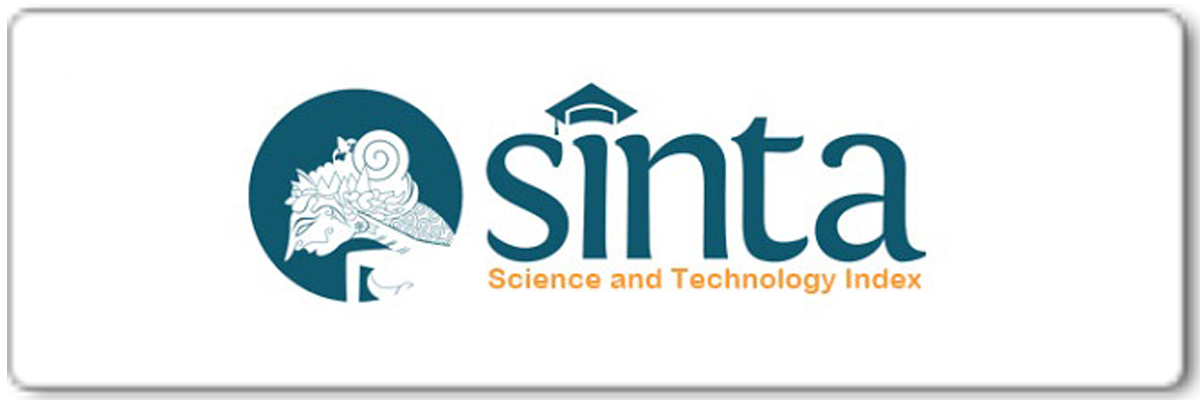The correlation between continuing professional development and creative pedagogical activities
Abstract
Continuing Professional Development (CPD) contributes to developing teacher professionalism in creating creative pedagogical activities that attract students' learning interests. Teachers' active participation in CPD could update how they teach to meet the needs of their students in increasing students’ learning outcomes. The study aimed to determine the correlation between CPD and creative pedagogical activities. There were 100 Indonesian English teachers involved in the study. Data were obtained from close-ended questionnaires focused on CPD and teachers’ creativity and then analyzed using correlational statistics. This study showed a positive correlation between the two variables that provide teachers with a framework for comprehending creativity and its significance to their professional development.
Keywords
Full Text:
PDFReferences
Adom, D., Sharma, S. S., & Agyei, I. K. (2021). Teaching strategies, school environment, and culture : Drivers of creative pedagogy in Ghanaian schools. Studies in Learning and Teaching, 2(2), 12–25.
Akyıldız, S. T., & Çelik, V. (2020). Thinking outside the box: Turkish EFL teachers’ perceptions of creativity. Thinking Skills and Creativity, 36, 100649. https://doi.org/10.1016/j.tsc.2020.100649
Aldujayn, N. N., & Alsubhi, A. M. (2020). Saudi EFL teachers’ interpretation toward creativity. English Language Teaching, 13(6), 162–171. https://doi.org/10.5539/elt.v13n6p162
Arifani, Y., Khaja, F. N. M., Suryanti, S., & Wardhono, A. (2019). The influence of blended in-service teacher professional training on EFL teacher creativity and teaching effectiveness. 3L: The Southeast Asian Journal of English Language Studies, 25(3), 126–136. https://doi.org/10.17576/3L-2019-2503-10
Ayob, A., Hussain, A., & Majid, R. A. (2013). A review of research on creative teachers in higher education. International Education Studies, 6(6), 8–14. http://dx.doi.org/10.5539/ies.v6n6p8
Cheung, R. H. P., & Leung, C. H. (2013). Preschool teachers’ beliefs of creative pedagogy: Important for fostering creativity. Creativity Research Journal, 25(4), 397–407. https://doi.org/10.1080/10400419.2013.843334
Cirocki, A., & Farrell, T. S. C. (2019). Professional development of secondary school EFL teachers: Voices from Indonesia. System, 85, 102111. https://doi.org/10.1016/j.system.2019.102111
Cremin, T. (2009). Teaching english creatively. In Teaching English Creatively (pp. 1–11). Routledge.
Cropley, A. J. (1997). Fostering creativity in the classroom: General principles. The Creativity Research Handbook, 1(84.114), 1–46.
Dineen, R., & Niu, W. (2008). The effectiveness of Western creative teaching methods in China: An action research project. Psychology of Aesthetics, Creativity, and the Arts, 2(1), 42–52. https://doi.org/10.1037/1931-3896.2.1.42
Ghanizadeh, A., & Jahedizadeh, S. (2016). EFL teachers’ teaching style, creativity, and burnout: A path analysis approach. Cogent Education, 3(1), 1151997. https://doi.org/10.1080/2331186X.2016.1151997
Grieve, A. M. D., & McGinley, B. P. (2010). Enhancing professionalism? Teachers’ voices on continuing professional development in Scotland. Teaching Education, 21(2), 171–184. https://doi.org/10.1080/10476210903281482
Guskey, T. R. (2002). Professional development and teacher change. Teachers and Teaching: Theory and Practice, 8(3), 381–391. https://doi.org/10.1080/135406002100000512
Hidayat, D. N., Fitriah, Mahlil, & Mason, J. (2023). Factors Impacting English Teachers’ Creativity in Teaching English as a Foreign Language in Indonesia. Studies in English Language and Education, 10(1), 155–173. https://doi.org/10.24815/siele.v10i1.26145
Hodges, G. C. (2005). Creativity in education. English in Education, 39(3), 47–61. https://doi.org/10.1111/j.1754-8845.2005.tb00624.x
Horng, J. S., Hong, J. C., Chanlin, L. J., Chang, S. H., & Chu, H. C. (2005). Creative teachers and creative teaching strategies. International Journal of Consumer Studies, 29(4), 352–358. https://doi.org/10.1111/j.1470-6431.2005.00445.x
Ismayilova, K., & Bolander Laksov, K. (2022). Teaching creatively in higher education: The roles of personal attributes and environment. Scandinavian Journal of Educational Research, 1–13. https://doi.org/10.1080/00313831.2022.2042732
Komba, W. L., & Nkumbi, E. (2008). Teacher professional development in Tanzania: Perceptions and practices. Journal of International Cooperation in Education, 11(3), 67–83.
Li, L. (2016). Thinking skills and creativity in second language education: Where are we now? Thinking Skills and Creativity, 22, 267–272.
Liao, Y. H., Chen, Y. L., Chen, H. C., & Chang, Y. L. (2018). Infusing creative pedagogy into an English as a foreign language classroom: Learning performance, creativity, and motivation. Thinking Skills and Creativity, 29, 213–223. https://doi.org/10.1016/j.tsc.2018.07.007
Lin, Y. (2011). Fostering creativity through education–a conceptual framework of creative pedagogy. Creative Education, 2(3), 149–155. https://doi.org/10.4236/ce.2011.23021
Miles, K. H., Odden, A., Fermanich, M., & Archibald, S. (2004). Inside the black box: School district spending on professional development in education. Journal of Education Finance, 30(1), 1–26.
Mohammadifar, F., & Tabatabaee-Yazdi, M. (2021). The power of continuing professional development on EFL teachers’ creativity. International Journal of Educational Studies, 4(1), 1–9. https://doi.org/: 10.53935/2641-533x.v4i1.50
Padwad, A., & Dixit, K. (2011). Continuing professional development: An annotated bibliography. British Council, India.
Pazin, A. H., Maat, S. M., & Mahmud, M. S. (2022). Factor influencing teachers ’ creative teaching : A systematic review. Cypriot Journal of Educational Sciences, 15(1), 1–17.
Richards, J. C. (2013). Creativity in language teaching. Iranian Journal of Language Teaching Research, 1(3), 19–43.
Seddigh, F., & Shokrpour, N. (2013). Creativity and its relationship with vocabulary learning strategy use of EFL students. Journal of Studies in Education, 3(2), 139–151. https://doi.org/10.5296/jse.v3i2.3199
Selkrig, M., & Keamy, R. (2017). Creative pedagogy: A case for teachers’ creative learning being at the centre. Teaching Education, 28(3), 317–332. https://doi.org/10.1080/10476210.2017.1296829
Slimani-Rolls, A., & Kiely, R. (2018). Exploratory practice for continuing professional development: An innovative approach for language teachers. Springer.
Speck, M., & Knipe, C. (2005). Why can’t we get it right?: Designing high-quality professional development for standards-based schools. Corwin Press.
Suwartono, T., & Oktavia, N. F. (2019). In search of creative EFL teachers: A perspective from best classroom practices. Ahmad Dahlan Journal of English Studies, 6(1), 9–19. https://doi.org/10.26555/adjes.v6i1.8914
Tabatabaee-Yazdi, M., Motallebzadeh, K., Ashraf, H., & Baghaei, P. (2018). Continuing professional development strategies: A model for the Iranian EFL teachers’ success. SageOpen, 8(1), 1–14. https://doi.org/10.1177/2158244018764234
Tyagi, C., & Misra, P. K. (2021). Continuing professional development of teacher educators: Challenges and initiatives. Shanlax International Journal of Education, 9(2), 117–126. https://doi.org/10.34293/education.v9i2.3634
Widayati, A., MacCallum, J., & Woods-McConney, A. (2021). Teachers’ perceptions of continuing professional development: A study of vocational high school teachers in Indonesia. Teacher Development, 25(5), 604–621. https://doi.org/10.1080/13664530.2021.1933159
Article Metrics
Abstract has been read : 278 timesPDF file viewed/downloaded: 0 times
DOI: http://doi.org/10.25273/etj.v11i1.15943
Refbacks
- There are currently no refbacks.
Copyright (c) 2023 Sukma Dwiaugita, Sri Kusuma Ningsih

This work is licensed under a Creative Commons Attribution-NonCommercial-ShareAlike 4.0 International License.
English Teaching Journal: A Journal of English Literature, Language and Education indexed by:
This work is licensed under a Creative Commons Attribution-NonCommercial-ShareAlike 4.0 International License.







